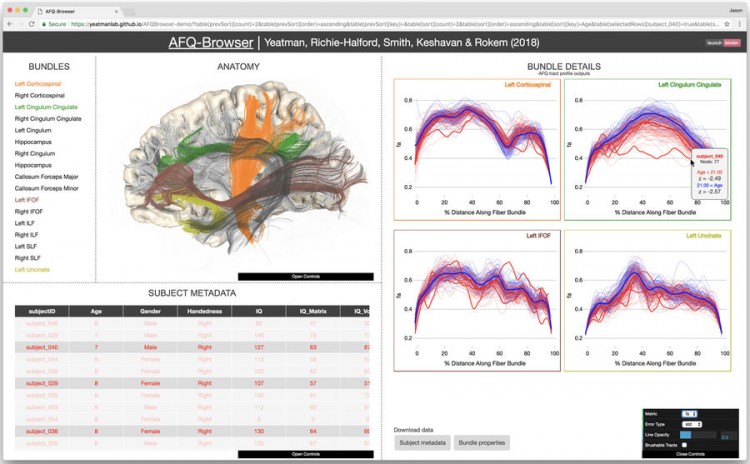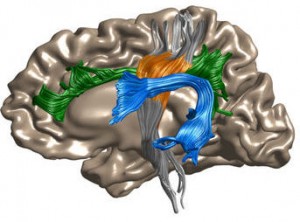it’s not quite the bumper crop of science events that took place in May 2019, which may be a good thing if you’re eager to attend everything. First, here are the events and then, the exhibition.
Nerd Nite at the Movies
On July 10, 2019, a new series is being launched at the Vancouver International Film Festival (VIFF) Centre. Here’s the description from the Nerd Nite Vancouver SciFact vs SciFi: Nerd Nite Goes to the Movies event page,
SciFact vs SciFiction: Nerd Nite Goes to the Movies v1. Animal
This summer we’re trying something a little different. Our new summer series of talks – a collaboration between Nerd Nite and VIFF – examines the pseudo-science propagated by Hollywood, and seeks to sift real insights from fake facts, in a fun, playful but peer-approved format. Each show will feature clips from a variety of movies on a science theme with a featured scientist on hand all done Nerd Nite style with drinks! We begin with biology, and our first presenter is Dr Carin Bondar.
Dr Bondar has been the host of Science Channel’s Outrageous Acts of Science, and she’s the author of several books including “Wild Moms: The Science Behind Mating in the Animal Kingdom”. Tonight she’ll join Kaylee [Byers] and Michael [Unger] from Nerd Nite to discuss the sci-facts in a variety of clips from cinema. We’ll be discussing the science in Planet of the Apes, The Birds, Arachnophobia, Snakes on a Plane, and more!
When: July 10 [2019]
Where: Vancouver International Film Centre
When: 7:30 – 8:30 – This talk will be followed by a screening of Alfred Hitchcock’s classic The Birds (9pm). Double bill price: $20
Tickets: Here!
The VIFF Centre’s SciFact vs SciFi: Animals According to Hollywood event page has much the same information plus this,
SciFact vs SciFi: Nerd Nite Goes to the Movies continues:
July 31 [2019] – Dr. Douglas Scott: The Universe According to Hollywood
Aug 14 [2019] – Mika McKinnon: Disaster According to Hollywood
Aug 28 [2019] – Greg Bole: Evolution According to Hollywood
This series put me in mind what was then the New York-based, ‘Science Goes to the Movies’. I first mentioned this series in a March 10, 2016 posting and it seems that since then, the series has lost a host and been embraced by public television (in the US). You can find the latest incarnation of Science Goes To The Movies here.
Getting back to Vancouver, no word as to which movies will accompany these future talks. If I had a vote, I’d love to see Gattaca accompany any talk on genetics.
That last sentence is both true and provides a neat segue to the next event.
Genetics at the Vancouver Public Library (VPL)
Coming up on July 23, 2019, a couple of graduate students at the University of British Columbia will be sharing some of the latest information on genetics. From the VPL events page,
Curiosities of the Natural World: Genetics – the Future of Medicine
Tuesday, July 23, 2019 (7:00 pm – 8:30 pm)
Central Library
DescriptionSince their discovery over a century ago, diabetes, multiple sclerosis, and Alzheimer’s have seemed like diseases without a cure. The advent of genetic treatments and biomarkers are changing the outcomes and treatments of these once impossible-to-treat conditions.
UBC researchers, Adam Ramzy and Maria-Elizabeth Baeva discuss the potential of genetic therapies for diabetes, and new biomarkers and therapeutics for Alzheimer ’s disease and multiple sclerosis.
This program is part of the Curiosities of the Natural World series in partnership with UBC Let’s Talk Science, the UBC Faculty of Science, and the UBC Public Scholars Initiative
Suitable for: Adults
Seniors
…Additional Details:
Alma VanDusen and Peter Kaye Rooms, Lower Level
It’s hard to know how to respond to this as I loathe anything that has ‘future of medicine’ in it. Isn’t there always going to ***be*** ‘a’ future with medicine in it?
Also, there is at least one cautionary tale about this new era of ‘genetic medicine’: Glybera is a gene therapy that worked for people with a rare genetic disease. It is a **treatment**, the only one, and it is no longer available.
Kelly Crowe in a November 17, 2018 article for the CBC (Canadian Broadcasting Corporation) news writes about Glybera,
It is one of this country’s great scientific achievements.
The first drug ever approved that can fix a faulty gene.
It’s called Glybera, and it can treat a painful and potentially deadly genetic disorder with a single dose — a genuine made-in-Canada medical breakthrough.
But most Canadians have never heard of it.A team of researchers at the University of British Columbia spent decades developing the treatment for people born with a genetic mutation that causes lipoprotein lipase disorder (LPLD).
LPLD affects communities in the Saguenay region of northeastern Quebec at a higher rate than anywhere else in the world.…
Glybera was never sold in North America and was available in Europe for just two years, beginning in 2015. During that time, only one patient received the drug. Then it was abandoned by the company that held its European licensing rights.
The problem was the price.
The world’s first gene therapy, a remarkable discovery by a dedicated team of scientists who came together in a Vancouver lab, had earned a second, more dubious distinction:
The world’s most expensive drug.
…
It cost $1M for a single treatment and that single treatment is good for at least 10 years.
Pharmaceutical companies make their money from repeated use of their medicaments and Glybera required only one treatment so the company priced it according to how much they would have gotten for repeated use, $100,000 per year over a 10 year period. The company was not able to persuade governments and/or individuals to pay the cost.
In the end, 31 people got the treatment, most of them received it for free through clinical trials.
Crowe has written an exceptionally good story (November 17, 2018 article) about Glybera and I encourage you to read in its entirety. I warn you it’s heartbreaking.
I wrote about money and genetics in an April 26, 2019 posting (Gene editing and personalized medicine: Canada). Scroll down to the subsection titled ‘Cost/benefit analysis’ for a mention of Goldman Sachs, an American global investment banking, securities and investment management firm, and its conclusion that personalized medicine is not a viable business model. I wonder if part of their analysis included the Glybera experience.
Getting back to the July 23, 2019 talk at the VPL’s central branch, I have no doubt the researchers will be discussing some exciting work but the future might not be as rosy as one might hope.
I wasn’t able to find much information about either Adan Ramzy or Maria-Elizabeth Baeva. There’s this for Ramzy (scroll down to Class of 2021) and this for Baeva (scroll down to Scholarships).
WINDS from June 22 to September 29, 2019
This show or exhibition is taking place in New Westminster (part of the Metro Vancouver area) at the Anvil Centre’s New Media Gallery. From the Anvil Centre’s WINDS event page,
WINDS
New Media Gallery Exhibition
June 22 – September 29
Opening Reception + Artist Talk is on June 21st at 6:30pm
Chris Welsby (UK)
Spencer Finch (UK)
David Bowen (USA)
Nathalie Miebach (Germany/USA)
Our summer exhibition features four exciting, multi-media installations by four international artists from UK and USA. Each artist connects with the representation, recreation and manifestation of wind through physical space and time. Each suggests how our perception and understanding of wind can be created through pressure, sound, data, pattern, music and motion and then further appreciated in poetic or metaphoric ways that might connect us with how the wind influences language, imagination or our understanding of historic events.
All the artists use sound as a key element ; to emphasize or recreate the sonic experience of different winds and their effects, to trigger memory or emotion, or to heighten certain effects that might prompt the viewer to consider significant philosophical questions. Common objects are used in all the works; discarded objects, household or readymade objects and everyday materials; organic, synthetic, natural and manmade. The viewer will find connections with past winds and events both recent and distant. There is an attempt to capture or allude to a moment in time which brings with it suggestions of mortality, thereby transforming the works into poignant memento-mori.Dates
June 22 – September 29, 2019
Price
ComplimentaryLocation
777 Columbia Street. New Media Gallery.
The New Media Gallery’s home page features ‘winds’ (yes, it’s all in lower case),
Landscape and weather have long shared an intimate connection with the arts. Each of the works here is a landscape: captured, interpreted and presented through a range of technologies. The four artists in this exhibition have taken, as their material process, the movement of wind through physical space & time. They explore how our perception and understanding of landscape can be interpreted through technology.
These works have been created by what might be understood as a sort of scientific method or process that involves collecting data, acute observation, controlled experiments and the incorporation of measurements and technologies that control or collect motion, pressure, sound, pattern and the like. The artists then take us in other directions; allowing technology or situations to render visible that which is invisible, creating and focussing on peculiar or resonant qualities of sound, light or movement in ways that seem to influence emotion or memory, dwelling on iconic places and events, or revealing in subtle ways, the subjective nature of time. Each of these works suggest questions related to the nature of illusive experience and how or if it can be captured, bringing inevitable connections to authorship, loss, memory and memento moriDavid Bowen
tele-present wind
Image
Biography
CreditsSpencer Finch (USA)
2 hours, 2 minutes, 2 seconds (Wind at Walden Pond, March 12, 2007)
Image
Biography
CreditsNathalie Miebach (USA)
Hurricane Noel III
Image
Biography
CreditsChris Welsby (UK)
Wind Vane
Image
Biography
CreditsHours
10:00am – 5:00pm Tuesday – Sunday
10:00am – 8:00pm Thursdays
Closed MondayAddress
New Media Gallery
3rd Floor Anvil Centre
777 Columbia Street
New Westminster, BC V3M 1B6
If you want to see the images and biographies for the artists participating in ‘winds’, please go here..
So there you have it, science events and an exhibition in the Vancouver* area for July 2019.
*July 23, 2019 Correction: The word ‘and’ was removed from the final sentence for grammatical correctness.
**July 23, 2019 Correction: I changed the word ‘cure’ to ‘treatment’ so as to be more accurate. The word ‘cure’ suggests permanence and Glybera is supposed to be effective for 10 years or longer but no one really knows.
***Added the word ‘be’ for grammatical correctness on Nov. 30, 2020.

